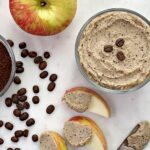Summer barbecues do not need to be synonymous with overeating. To survive the season without gaining weight here are some tips for a healthier barbecue.
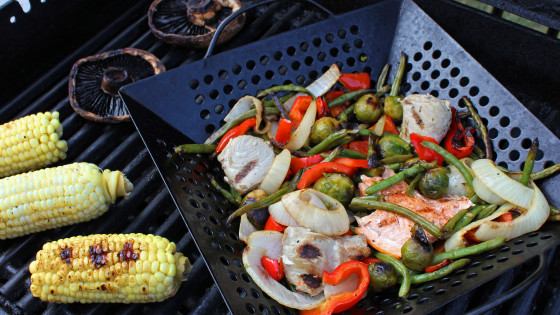
Grill vegetables. Fill your plate with salad or veggies first. Starting with veggies will help fill you up and make it easier to control your portion of higher calorie foods. Grills are especially great for bell peppers, zucchini, cherry tomatoes, carrots, onions, bok choy, radicchio and mushrooms. Kebabs can be a festive way to incorporate vegetables at a barbecue. For a quick veggie kebab cut mushrooms, tomatoes, eggplant, zucchini and bell peppers to be around the same size and they will cook at the same rate.
Build a better burger. Opt for a whole-wheat bun for a fiber-rich starch. If having a starchy side like corn, beans, potatoes or macaroni turn your burger into an open-faced sandwich, or skip the bun all together, to help balance the amount of carbohydrates at your meal.
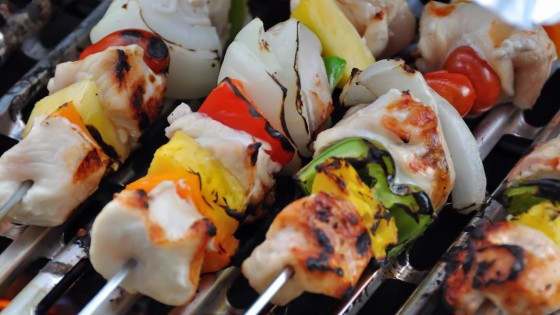
Choose a lean protein. Don’t feel limited to grilling hotdogs and hamburgers. Be creative. Try grilling lean turkey burgers, skinless chicken breast, black bean burgers, veggie burgers, salmon or tuna or extra firm tofu.
Use condiments with caution. Condiments can make or break the healthiness of a food. Mustard is a great go-to spread. A tablespoon of Dijon mustard has 18 calories with no added sugar or fat, while mayonnaise has 57 calories and 5 grams of fat. Ketchup can easily be a major source of hidden sugar in many people’s diet. If you do chose ketchup, read ingredient lists and shop for a brand with no added sugar.
Be mindful of the marinade. If using a store bought marinade, be sure to read the food label to avoid artificial sweeteners and additives. Try to choose a marinade with a lower sugar count, like Italian dressing rather than BBQ sauce.
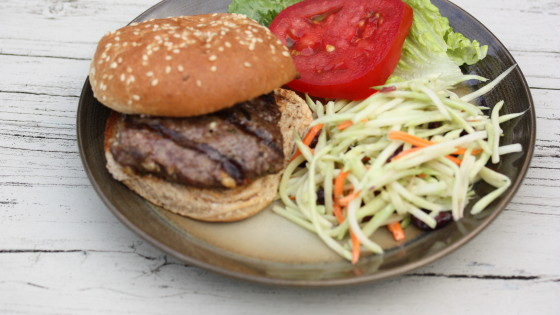 Choose sensible sides. Potato salad, macaroni salad and coleslaw are usually present at a barbecue; however, they are loaded with a ton of saturated fat (mayo). For a healthier side choose a dish that is made with oil and vinegar or a yogurt base. For healthier versions of your barbecue favorites, try German-styled potato salad or give coleslaw a makeover by making it with ½ cup plain nonfat yogurt, 2 tbsp apple cider vinegar and season with salt, pepper and paprika. In addition to shredded cabbage and carrots, add shredded broccoli, apples and raisins. Or for a new favorite, try a whole grain salad made of wild rice, quinoa, wheat berries or barley.
Choose sensible sides. Potato salad, macaroni salad and coleslaw are usually present at a barbecue; however, they are loaded with a ton of saturated fat (mayo). For a healthier side choose a dish that is made with oil and vinegar or a yogurt base. For healthier versions of your barbecue favorites, try German-styled potato salad or give coleslaw a makeover by making it with ½ cup plain nonfat yogurt, 2 tbsp apple cider vinegar and season with salt, pepper and paprika. In addition to shredded cabbage and carrots, add shredded broccoli, apples and raisins. Or for a new favorite, try a whole grain salad made of wild rice, quinoa, wheat berries or barley.
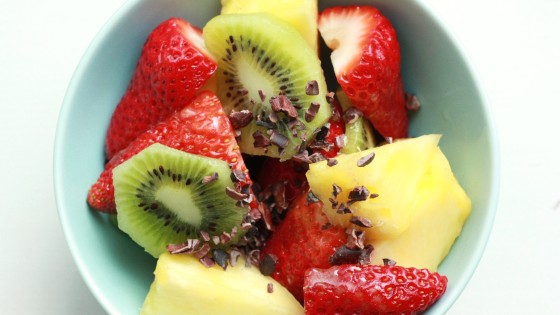 Don’t forget the fruit. Grill fruit for a healthier sweet dessert. Bananas, peaches, pears, nectarines and pineapple all grill well. Their natural sugars caramelize, creating a sweet treat without the added sugar. Sprinkle with cinnamon or non-fat Greek yogurt for some added flavor.
Don’t forget the fruit. Grill fruit for a healthier sweet dessert. Bananas, peaches, pears, nectarines and pineapple all grill well. Their natural sugars caramelize, creating a sweet treat without the added sugar. Sprinkle with cinnamon or non-fat Greek yogurt for some added flavor.
Stay hydrated. Thirst or dehydration is easy to confuse for hunger. Staying adequately hydrated can help prevent eating out of thirst. Choose water, seltzer, club soda or unsweetened iced tea for a healthier choice without the added sugars and calories.
Watch your portions. Before filling your plate at a barbecue, take an inventory of all the options available. After looking at the option prioritize what you would like to eat. Taking the time to think about your meal before filling your plate will give you some time to think about your portioning and how you can balance your food groups. Try to make half your plate vegetables, a quarter your plate lean protein and a quarter a fiber-rich starch. For starchy sides like potato, pasta or bean salads think of a tennis ball, baseball or a female’s fist. Starchy sides should equal about 1 cup total. A healthy portion of protein equals 3-4 ounces. Try to choose pieces of chicken, steak and fish that are about this size of a deck of cards. It is easy to go overboard with salad dressing. Try to limit salad dressing to 1 tablespoon, or the size of the tip of your thumb. One tablespoon of salad dressing can have 50-100 calories, which adds up quickly.
How can you make healthier choices at your next BBQ?



